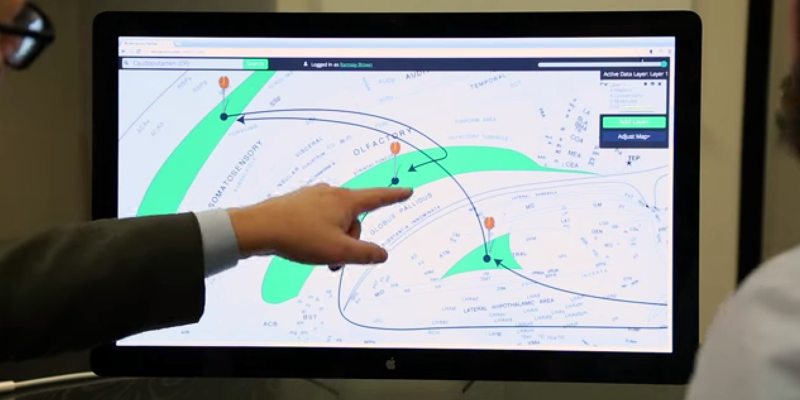Neuroscience
| Neuroscience researchers have created Golgi, an interactive map of a rat brain that makes exploring the brain as easy as using Google Maps. |
| |
What is the link in your brain between smell and memory? Where’s the connection between habits and Parkinson’s disease? How does one detour into addiction?
To answer these and other complex scientific and medical questions, two University of Southern California scientists have built Golgi, an interactive map of a rat brain that makes exploring the brain as easy as using Google Maps.
The map can be found online at www.useGolgi.com.
"We have a big advantage because we’re the only group — really in the world — that has a flat map of the brain." |
“We have a big advantage because we’re the only group — really in the world — that has a flat map of the brain,” said Larry Swanson, National Academy member, professor of biological sciences at the USC Dornsife College of Letters, Arts and Sciences and recent past president of the Society for Neuroscience.
Swanson, a longtime pillar of the neuroscience community, collaborated with 25-year-old USC graduate student Ramsay Brown, who designed the program as an undergraduate worker in Swanson’s lab.
| Related articles |
To display the brain’s three-dimensional structure on two-dimensional screens, Swanson and Brown used the embryonic brain — which begins as a flat sheet of cells — as a guide. This flattens the brain and keeps related portions of the brain located close together. Flattening the brain lets users click around and display connectome and other data directly on regions they’re interested in learning about for research or treatment.
“We designed a really intuitive way to explore the more nuanced details about the brain and connectome,” Brown said. “Making this data easy and accessible will improve how scientists and doctors explore, explain and treat human conditions and restore quality of life — and that’s really special to us.”
Brown and Swanson think this program is just the beginning.
Connectomics, the subfield of neuroscience that studies and maps the brain’s wiring, is advancing quickly and providing better maps as the technique evolves. Programs like Golgi will help doctors and researchers make sense of these new maps and make better medical and scientific decisions faster.
“Many people now think that understanding these neurological diseases is going to require understanding the circuitry of the brain,” Swanson said.
SOURCE USC
| By 33rd Square | Embed |







0 comments:
Post a Comment